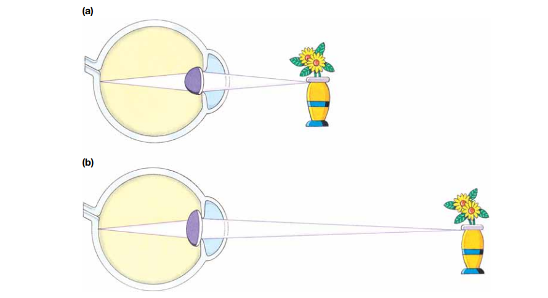Psychology_Unit 2_AOS 2
1/52
Earn XP
Description and Tags
What influences a person's perception of the world?
Name | Mastery | Learn | Test | Matching | Spaced |
|---|
No study sessions yet.
53 Terms
Cornea
Light enters the eye through the transparent, convex shaped membrane known as the

Lens
a transparent, convex structure behind the iris that changes shape to focus light onto the retina

Retina
the receiving area for light images located at the back of the eye, which contains specialised neurons known as

Fovea
Optic nerve
carries information to the occipital lobe in the brain.

Pupil
allows light to enter the eye.

Aqueous humour
•Light then passes through the aqueous humour, which helps give the eyeball shape.

Vitreous humour
•which is between the lens and the retina, and also helps maintain the eyes shape.

Attention
is defined as the process of focusing on specific stimuli or aspects of the sensory environment whilst ignoring and therefore excluding others.
Sustained attention
involves maintaining a high degree of attention (on a specific stimulus or task) for a continuous period of time without being distracted.
Selective
is focusing on a single activity while disregarding other environmental stimuli.

Divided
is distributing attention to allow the processing of two or more stimuli at the same time.
Controlled processes
Sustained + Selective
Automatic processes
Divided
perception
is the process by which we interpret and give meaning to sensory information. This results in the conscious experience of ourselves and the world.
top-down processing
●the processing of sensory information by applying prior knowledge and expectations, which changes how we perceive it.
bottom-up processing
the processing of sensory information beginning with salient sensory data, which is then processed and integrated to produce meaning.
Depth cues
Monocular depth cues
Accomodation
Accomodation
●involves the automatic focusing mechanism of the lens in the eye to adjust the shape of the lens in response to differing distances of view from the object.

Monocular Pictorial cues
Linear
Texture gradient
Relative size
Interposition
Linear
the apparent convergence of parallel lines as they recede into the distance.


Interposition
or overlap, occurs when one object partially obscures another, and therefore the partially obscured object is perceived as being further away.

Texture gradient
refers to the gradual diminish of detail that occurs on surfaces as they recede into the distance. More detail = closer

Relative size
refers to the tendency to perceive the object that produces the largest image on the retina as being closer, and the object that produces the smallest image on the retina as being further away.
Binoncular cues
Retinal disparity
the brain detecting similarities and differences between the information being sent from each eye, due to the eyes being 6–7 cm apart
Convergence
involves the brain detecting and interpreting depth or distance from changes in the tension of eye muscles when the two eyes turn inwards (towards the nose) to focus on objects that are close.
Similarity
The principle of similarity involves the tendency to perceive stimuli – or parts of a visual stimulus that have similar features –as belonging together
Proximity
The principle of proximity is the tendency to perceive parts of a visual stimulus that are positioned close together as belonging together in a group
Figure-ground
, we organise visual information by separating important aspects in the visual field from the background/ surrounding.
Closure
the tendency to mentally ‘close up’, fill-in, or ignore gaps in a visual stimulus.
Perceptual set
is defined as a readiness to perceive stimuli in accordance with what we expect it to be.
Past experience
•Personal, subjective experiences that are unique to each individual and may lead to differences in interpretation of visual stimulus
Motivation
●Perception can be influenced by a person’s desires, whereby they see what they want to see rather than what is actually there.
Memory
●Our memory is shaped by our experiences of the world, and it helps us understand how our world works.
Context
•Environment or setting in which a perception of an event occurs.
Perceptual constancy
●constancy refers to the tendency to perceive a stimulus as remaining constant, despite any changes that may occur to the image cast on the retina.
Size constancy
●involves recognition that an object’s actual size remains the same despite changes in the size of the retinal image.
Shape constancy
●refers to the tendency to perceive an object as maintaining its shape despite any change in shape of the retinal image of the object.
Culture
●The many characteristics of a group of people, including their attitudes, behaviours, customs and values that are transmitted from one generation to the next.
Visual illusion
Our perception of it must consistently differ from the objective reality.
Ames room illusion
●is a specially constructed, physical room, designed to create a visual illusion for an observer viewing the room through a peephole.
Visual agnosia
●is loss or impairment of the ability to recognise visual stimuli.
Prosopagnosia
●involves an inability to recognise the faces of familiar people (and oneself) despite having no memory dysfunction, memory loss or impaired visual sensation.
Associative agnosia
●An inability to associate a visual stimulus with stored information about objects in memory despite having normal perceptual abilities.
Apperceptive agnosia
●An inability to accurately perceive visually presented stimuli.
supertaster
●is a person who is more sensitive to certain tastes than most others.
sub-taster
judgement of flavour
miraculin
●Miraculin is a protein found in the pulp of the berry of the West African Synsepalum dulcificum shrub, known as the miracle berry or miracle fruit.
Synaesthesia
Defined as a perceptual experience in which stimulation of one sense produces additional sensations in another.
Spatial neglect
is a condition involving an inability to attend to sensory stimuli on one side of the body.